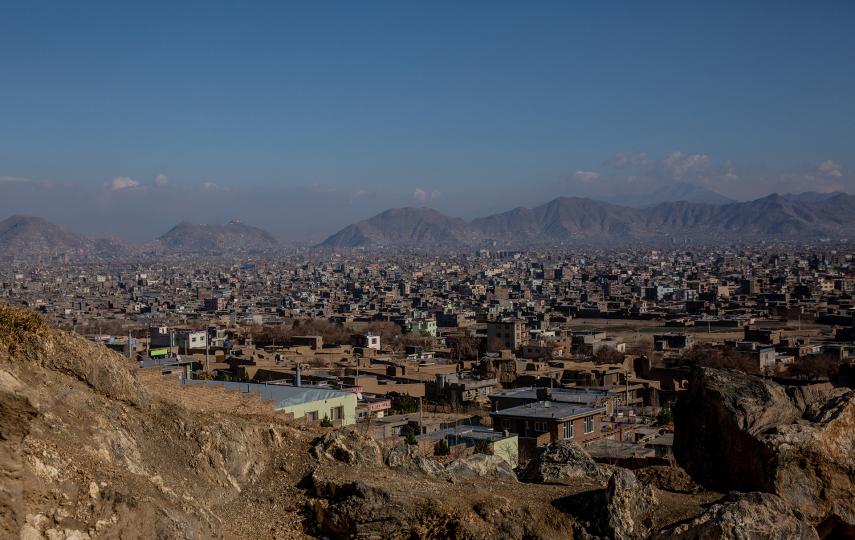Bam
The United Nations Children’s Fund (UNICEF) is now preparing to begin the long process of reconstructing people's lives among Bam's most vulnerable inhabitants. This comes a week after the earthquake virtually destroyed the city and killed at least 30,000. "Our problem is data," Marc Verga, spokesman for UNICEF told IRIN on Friday. "Where are the people in need and how many are there?"
Because there is conflicting information on how many people are left in Bam, there is no breakdown of how many children there are, let alone their age and sex. "Until we know this, work is difficult," Verga added.
But the information flow is improving. The UN assessment of the post-earthquake situation is progressing. Some 80 per cent of buildings and housing is beyond repair. Twenty-three schools have been destroyed and many others have been damaged. The Iranian Red Crescent Society (IRCS) has divided the city
into 12 zones, each of which is now being monitored by volunteers and cleared of rubble and bodies.
The task is vital to clarify how many people remain in need of care. "When you take out those that have been buried, those that were taken away for treatment and those provided with tents, we’re missing about 40,000-50,000 people," said Verga. “And thousands have left the city, so there are unknown parameters for how many are left in Bam.”
The government announced on Friday there had been 28,000 burials in Bam and the figure is expected to rise to 30,000 when the registration of all burials has been completed. Some 1,700 people have been confirmed dead from the 20 villages surrounding the city.
In this difficult situation, UNICEF has three priorities: child protection, water and sanitation and education.
The Iranian Ministry of Health has deployed 30 trauma counsellors to the city, who are being supported by an Iranian child protection officer with UNICEF. Germany’s Samaritan Bund has also dispatched 100 psychiatrists and 30 psychologists to the city and France’s Medecins Sans Frontieres (MSF) will also
contribute to mental health treatment. Post-traumatic stress disorder is believed to be a significant problem for the whole population of Bam, but particularly children.
Half the water network in the city is now working and UNICEF water engineers arrived yesterday. Streets are being closed off and sanitised and the Ministry of Health, with aid from the Medical Aid Committee of France, has set up 10,000 toilets, but many more are needed if disease is to be kept at bay.
But there are cultural problems. "The latrines we send to most disasters, usually in Africa, are not culturally acceptable here," said Vergai. "They need to have a source of water actually inside each toilet."
Of more long-term importance is education. However, the city’s human infrastructure has been if anything more badly damaged than the physical surroundings. Depending on the availability of buildings and teaching staff, the city’s schools have been scheduled to reopen on 10 January.
UNICEF said education is vital for the psychological regeneration of a child. After traumatic crisis like the earthquake, school is an important way of getting children back to normal.
Similar problems are hampering attempts to get the health system up and running. According to the Ministry of Health, half the city’s health staff are dead and the others are unable to work or are injured. As well as the destruction of Bam’s hospitals, with the loss of 250 beds, 95 clinics and 23 health centres were destroyed or damaged.
But the immediate future still holds many questions. Although massive new camps are almost complete, survivors cannot move into them until a proper assessment has been made of who needs shelter the most.
"It may sound like needless bureaucracy but everything has to be done in a controlled fashion." Ted Pearn, the manager of the UN Onsite Co-ordination Centre (OSCOs), part of the UN Disaster Assistance Co-ordination Team (UNDAC), told IRIN.
IRCS workers have begun to register survivors who will be given a place in one of the three giant tented camps that have been established on the outskirts of Bam. Their identity will be recorded as will the number of dead and living in each family.
Then comes the delicate task of distributing aid. IRCS officials told IRIN that they are instructing their volunteers to take aid to survivors quietly and at night, when there is less chance of deliveries being misdirected to the wrong people.
As always, distribution is the most difficult task. “There are mountains of supplies,” said Verga. “It’s a question of making sure that the people who need them most get them.”
This article was produced by IRIN News while it was part of the United Nations Office for the Coordination of Humanitarian Affairs. Please send queries on copyright or liability to the UN. For more information: https://shop.un.org/rights-permissions




